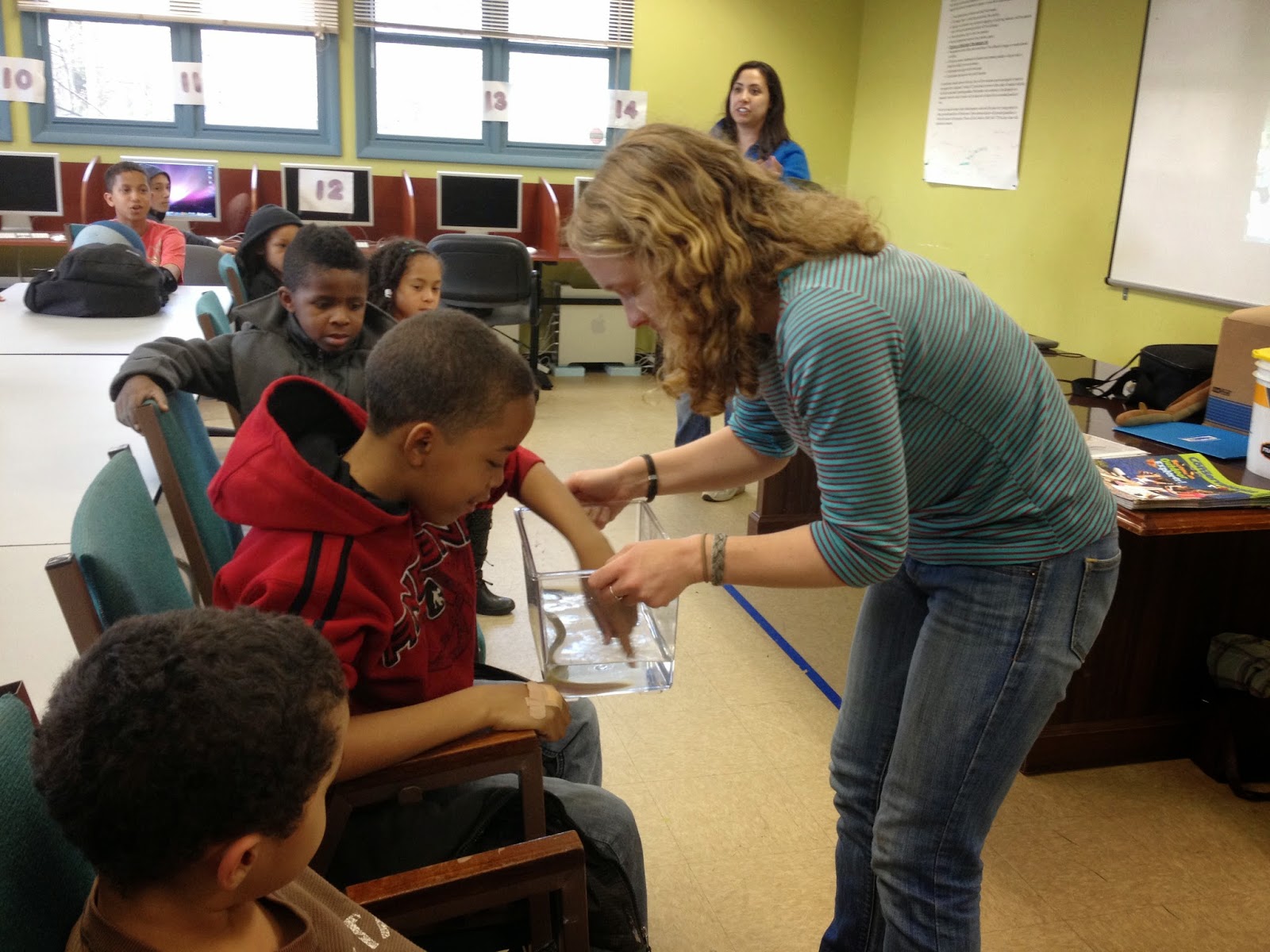 We had the very special opportunity to learn and participate in the NYSDEC American Eel Citizen Science Project. This effort is organized by some great friends and colleagues of mine and I was super happy they were able to do a 2 part lesson with us- a classroom style presentation and then a trip to an eel monitoring location the following week.
We had the very special opportunity to learn and participate in the NYSDEC American Eel Citizen Science Project. This effort is organized by some great friends and colleagues of mine and I was super happy they were able to do a 2 part lesson with us- a classroom style presentation and then a trip to an eel monitoring location the following week.Our kids had a chance to see live baby glass eels, touch an adult eel and learn more about their life cycle and migration patterns. The 2 part eel lesson fit well into Earth Day/ Human Impact Week because we talked about positive and negative human interactions with American Eels (Creating dams & barriers, scientists and biologists helping, harvesting/selling for food, etc)
During Watershed Week we actually went out to a nearby creek to check the fyke net! The nets get checked every day, juvenile eels are collected from the net, counted, weighed, and released right above the nearest vertical barrier. This helps give the eels an extra boost as they try traveling up the Hudson, plus it gives communities the chance to participate in data collection and enables scientists to gain a better understanding of the eel populations in this area.
To collect eels from the net you need to wear waders and enter the water. The process is quicker with the more people you have, but because of a couple factors (age of out kids, rainy/cold weather, # of waders available) only myself and my friend, "the eel lady" went in to collect and the kids helped with counting back on land. Besides counting the number of glass eels that day (100!!) we also recording things like the date, time, weather, air temperature and water temperature.
In days following we continued to talk about eels, including these life cycles coloring sheets in which we also numbered and labeled the names of each stage.





No comments:
Post a Comment